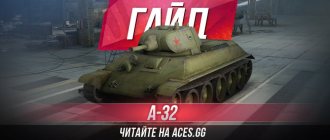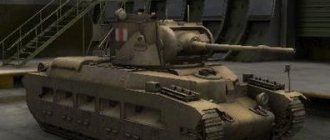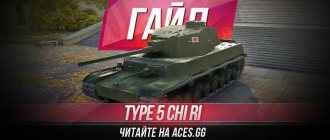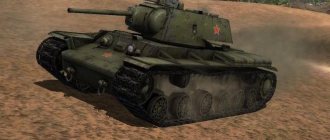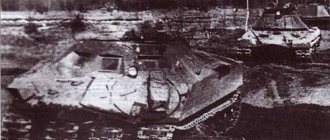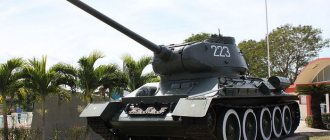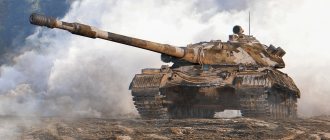On January 8, 2022, Order No. 700 of the Minister of Defense of the Russian Federation dated November 22, 2021 came into force, which approved the new Instruction on organizing work to ensure the functioning of the military registration system (hereinafter referred to as MO Instruction No. 700). It also directly concerns all employers. Among other things, this order of the Ministry of Defense established a new form for the Card of a citizen subject to military registration - form 10. A sample of filling out and the form itself, as well as how to fill it out, are given in this article.
History of the creation of the Su 27 fighter
Predict the scale of success in creating the Su-27
Few dared.
The early history of this car is so ill-fated that on several occasions it seemed possible that the project would be abandoned. The Su-27
was conceived in 1969, when the Sukhoi Design Bureau received an order to create a long-range interceptor to replace
the Tu-128
,
Su-15
and
Yak-28P
.
Airplane Su 27
The prototype, designated T-10-1, made its first flight on May 20, 1977, under the control of Hero of the Soviet Union test pilot V. Ilyushin, the aircraft was powered by AL-21-F3 engines, and no standard weapons were installed on board. On this specimen, the overall performance was checked, the car was tested for controllability and stability.
In 1978, the second side of the T-10-2 . One of the flights ended in disaster; test pilot Hero of the Soviet Union E. Solovyov fought to the end with the sharply increased amplitude of pitching, but the plane collapsed and the pilot was unable to escape. The next T-10-3 was equipped with new AL-31F power plants, and the experimental Mech radar station was installed the T-10-4
In 1979, when data about the American F-15
, it became clear that the new machine was inferior to it in all respects, and even earlier, when the
T-10 , there was a tendency towards deterioration in flight characteristics.
After lengthy calculations, it was decided to rework the entire car and start almost from scratch. Nevertheless, the development of previous prototypes came in handy and a new machine with a different designation T-10S-1 already made its first flight on April 20, 1981 under the control of V. Ilyushin. Significant modifications were made to this aircraft - changes affected the wing and tail, the front landing gear was moved back, the cockpit canopy now did not move, but opened back and up, the brake flap was installed at the rear of the pilot's cabin and the nose of the aircraft acquired a bulbous shape.
Troubles seemed to haunt this aircraft - on December 23, 1981, at a speed exceeding the speed of sound, the front part of the fuselage was damaged, test pilot A. Komarov was unable to leave the plane and he died. During testing on July 16, 1983, the destruction of the leading edge of the wing and the upper part of the fin almost cost the life of test pilot N. Sadovnikov; only thanks to the courage and professionalism of the pilot, it was possible to land the car at a speed exceeding the landing speed by 100 km/h. For the same reason, another T-10S-21 , the pilot ejected.
Su 27 aircraft from different angles
The reason was determined - increased hinge moment of the slat, strengthened the airframe and wing structure and reduced the area of the slat. Tests showed that the new aircraft was not inferior, and in some respects surpassed the F-15
.
In August 1993, the aircraft was adopted by the Air Force under the designation Su-27S
, and for air defense forces as
the Su-27 P
(interceptor).
What has changed with military registration cards?
The main innovation is that, according to Instruction No. 700, from January 8, 2022, organizations need to issue special separate military registration cards for employees.
At the same time, from this date, the previous similar order, dated July 18, 2014, No. 495, became invalid.
Thus, for each conscripted employee or person liable for military service, you must maintain a Citizen Card subject to military registration in the organization. This is Form No. 10, mandatory from 2022, which is given in Appendix No. 22 to Instruction No. 700.
The military registration card has a front and back side. Format 210 × 297 mm.
Let us note that until 01/08/2022, the Ministry of Defense recommended in the Methodological Recommendations for maintaining military records in organizations (approved by the General Staff of the Armed Forces of the Russian Federation on 07/11/2017) for military records to enter information into the personal cards of employees using the unified T-2 form. Now there is a separate form for this purpose in Form 10 from Instruction No. 700.
Description of the Su 27 fighter aircraft
Su-27
fits into the traditional aerodynamic design and is made according to an integral layout with a mid-wing arrangement with a slight elongation. The wing has beads that form a smooth curve with the fuselage, creating a single whole with the body. This arrangement increases the lift coefficient during maneuvers and increases internal volumes.
In later series, the wing sweep was reduced and the area increased to 62 m2. The shape of the wing tips became cut off and end pylons were placed on them, which also played the role of anti-flutter weights. Instead of ailerons and flaps, flaperons were installed to perform their functions.
Beams were mounted on the engine nacelles from the outside and the keels were transferred to them. To improve the anti-spin qualities of the aircraft, false fins were placed on the beams below. The areas of the horizontal and vertical tail have been increased for better stability. A container for braking parachutes and equipment for shooting infrared traps were placed in the tail fin between the power plants.
The main landing gear in later series of the vehicle are retracted forward into the engine nacelles, which created a smoother interface between the wing and fuselage. The engine nacelles were redesigned for AL-31F engines with overhead placement of units, the power plants themselves are protected from foreign objects by lowered grilles on the air intakes. As general designer M.I. put it. Simonov, at the T-10 and Su-27
Only the wheels are common, the rest has been changed.
The vehicle is equipped with AL-31F bypass turbojet engines, which have increased power in afterburner and non-afterburner mode. Improved gas-dynamic characteristics of the turbocharger and a special design of air intakes have increased the reliability and stability of engine operation in deep surge modes at supersonic speed and in straight, inverted and flat spin conditions.
Airplane Su 27 diagram
The fuel system is designed for a large supply of fuel; it includes four tanks: the front fuselage - 4020 l, the center section tank - 5330 l, two wing compartments - 1270 l, the tank in the tail - 1350 l.
The cockpit is equipped with a K-35DM ejection seat. On the Su-34
and on
the Su-27KUB
the pilots are located in a side-by-side configuration; on the other two-seat variants they are located in tandem.
Installing a laser rangefinder and a heat direction finder on an aircraft allows the pilot to search and detect the enemy in covert mode, without turning on the on-board radar and without unmasking his position. These systems make it possible to detect a target in front at a distance of 30 km, in the rear hemisphere - 15 km.
At long range, the destruction of enemy aircraft is ensured by the N001 radar and the high characteristics of the optical-electronic sighting system. The main means of air combat is the Su-27
R-73
and
R-27
medium- and short-range
air-to-air missiles became available the Su-27
was armed with
the R-77
(RVV-AE) medium-range missile
Flight characteristics and armament of the Su 27 aircraft
- The length of the aircraft (with the PVD boom) is 21.94 m.
- The height of the aircraft is 5.93 m.
- Wing span – 14.7 m.
- Wing area – 62.94 m2.
- Engines – AL-31F.
- Afterburner thrust - 2 x 122.59 Kn.
- Thrust in non-afterburning mode – 2 x 74.53 Kn.
- The empty weight of the aircraft is 16400 kg.
- Maximum take-off weight – 28 tons.
- Maximum fuel weight is 9400 kg.
- Normal fuel weight is 5270 kg.
- Ground speed is 1400 km/h.
- Speed at altitude is 2500 km/h.
- Service ceiling – 18500 m.
- Flight range – 3680 km.
- Combat radius at low altitude is 420 km.
- Combat radius at medium altitude is 1090 km.
- Armament - 4 air-to-air missiles R-73
, 6 missiles R-27.
Heavy tank T-10
At the end of the 40s, a rather strange situation developed with heavy tanks in the Soviet Army. There were three types in service - IS-2, IS-3 and IS-4, each of which could not be considered as the main heavy vehicle for the future. In this regard, at the end of 1948, GBTU issued technical specifications for a new machine. The main requirement was to limit the combat weight - no more than 50 tons. The developer was determined by the design bureau of the Chelyabinsk plant of the USSR Ministry of Transport Engineering. Zh. Ya. Kotin was appointed chief designer responsible for object 730 (this designation was given to the new tank project). Officially, the vehicle was named IS-8.
In April 1949, a technical project was developed. Now it is no longer known from whom this idea came, but object 730 became a direct development of the IS-3 tank line. The shape of the hull, especially the characteristic “pike nose”, and the streamlined cast turret evoked direct associations with the IS-3.
In May, to test the main functional solutions, a full-size wooden model was built, and then the production of the first IS-8 prototype began in the pilot workshop. After carrying out factory tests, it turned out that in general the vehicle met the technical specifications, and a decision was made to produce a pilot batch of 10 tanks. They went through two more stages of factory testing in 1949, after which state tests took place in April - May 1950 at the NIBT test site in Kubinka near Moscow.
Based on their results, the State Commission recommended starting mass production of the IS-8, but with modifications. In particular, the engine life was considered insufficient. Therefore, in the summer of 1950, in the area of the city of Mary in Turkmenistan, tests were carried out to determine the warranty life of the engine, and in the fall - military tests. However, not all was well with the new vehicle: many modifications had to be made, as a result of which the tank went through a large cycle of repeated and control field and factory tests, which ended only by December 1952. At the same time, the project changed several times, as a result of which the vehicle first received the IS-9 index, and then the IS-10.
In March 1953, J.V. Stalin died, after which the abbreviation “IS” sank into oblivion. At the end of the year, the tank was adopted by the Soviet Army under the designation T-10. Its welded body had a complex box-like shape with a frontal part in the shape of a “pike nose”. The sides are composite, consisting of an upper inclined and lower bent part. The upper aft sheet of the hull was made folding to provide access to the transmission units. The bottom of the body is stamped, trough-shaped. At the rear (under the power train) the bottom is flat. The rigidity of the bottom was also enhanced by the balancer brackets welded into it. To service the units and mechanisms, there were hatches and holes in the bottom, closed with armored covers or threaded plugs. The driver's seat was located in front along the axis of the car. For landing there was a triangular hatch, closed with a sliding lid. The driver monitored the terrain through three devices: one of them TPV-51 was installed in the hatch cover, the other two TYPEs were installed in the windows of the upper part of the frontal sheets of the hull.
The tower is cast, streamlined in shape with variable angles of inclination of the walls and variable thickness from 250 mm in the bow to 40 mm on the cast part of the roof. The turret was mounted on a ball bearing above a cutout in the turret plate of the tank's hull roof. The front part of the turret roof was cast integrally with the turret body, and the rear part was made of armor plate and welded into the roof. In this sheet on the right there was a loader's hatch, above which an anti-aircraft machine gun was mounted. On the left there was a hatch, above which the commander's cupola was located. In the front part of the tank commander's hatch there was a TPKU observation device, and along the circumference of the upper shoulder strap of the turret there were seven observation devices. In addition, the turret had three more TPB-51 devices: one for the gunner and two for the loader. The turret rotation mechanism is planetary, with a self-braking worm pair, with manual and electric drives.
A 122-mm D-25TA tank gun with a 48-caliber barrel and a coaxial 12.7-mm DShKM machine gun were installed in a cast mantlet. The gun had a two-chamber muzzle brake and a horizontal automatic wedge breech. The initial speed of the armor-piercing projectile was 795 m/s. The target firing range using the TSh2-27 telescopic sight was 5000 m, and using the side level it was 15000 m. Loading was facilitated by the use of a ramming mechanism. The rate of fire was 3-4 rounds per minute, and when loading manually 2-3 rounds per minute.
An anti-aircraft 12.7-mm DShKM machine gun, equipped with a K10-T collimator sight, was installed on the loader's hatch turret. The gun's ammunition consisted of 30 separately loaded shots placed in clamp and tray stowage. The machine guns' ammunition consisted of 1,000 rounds, 300 of which for the coaxial machine gun were packed in six standard ammunition boxes, and 150 for the anti-aircraft machine gun - in three special ammunition boxes, 550 rounds of ammunition were stored in zinc boxes. 12-cylinder four-stroke V-shaped diesel engine V-12-5 liquid cooled with a displacement of 38,880 cm3 and a maximum power (without air cleaner and exhaust back pressure) of 700 hp. With. at 2100 rpm it was installed on a pedestal consisting of four brackets welded to the sides and interconnected by longitudinal angles.
The V-12-5 engine was a V-2 diesel engine. Its main features: installation of an AM-42 centrifugal air blower, which made it possible to increase its power; installation of two breathers on the upper crankcase of the engine; equipping the engine with a combined oil filter Kimaf-3; the presence of a double oil supply to the crankshaft; installation of an oil injection pump with an electric motor to provide the engine with lubrication during startup; presence of a drive for an electric tachometer; lack of exhaust manifolds. The tank's fuel system included three internal tanks - two rear tanks with a capacity of 185 liters each and one front tank with a capacity of 90 liters. All three tanks were connected to each other by pipelines, and the front one was also connected to the fuel distribution valve. On the wings at the rear of the tank, one external fuel tank with a capacity of 150 liters each was installed. External tanks were connected to the tank's fuel system. Thus, the total capacity of all tanks was 760 liters.
Beginning in June 1955, internal rear fuel tanks with a capacity of 270 liters each were installed. As a result, the total tank capacity increased to 930 liters. The tank had combined inertial-type air cleaners. The cooling system is liquid, closed, ejection. The engine was started using an ST-700 electric starter or compressed air.
The rear drive wheels had removable rims with 14 teeth. On each side there were 7 cast double road wheels with a metal rim and three support rollers. The suspension is independent, with a beam torsion bar and an elastic stop. The beam torsion bars had 7 rods with hexagonal heads. The caterpillar is small-linked, lantern geared. Each caterpillar consists of 88 tracks 720 mm wide with a pitch of 160 mm.
The tank was equipped with a 10RT-26E radio station and an internal intercom TPU-47-2 for four subscribers. In 1955, two experimental vehicles were created - object 267 sp.1 with a guidance stabilizer in the vertical plane and object 267 sp.2 with a two-plane stabilizer. A year later, these innovations were introduced on a new modification of the T-10A (object 730A). The PUOT-1 Hurricane cannon with a stabilizer in the vertical plane received the designation D-25TS. On the T-10A, instead of the TSh-2-27 sight, a TPS-1 periscope optical-gyroscopic sight and a duplicate TUP telescopic sight were installed. The driver received a TVN-1 active night vision device and a GPK-48 gyro-compass for orientation. As a result of the installation of a gun with modified drives, as well as to improve armor protection, the turret and gun mantlet were modernized.
To reduce gas contamination in the fighting compartment, an ejector was installed on the gun barrel. Additionally, they introduced a mechanism for discharging the projectile and charge, a new lifting mechanism with a release link, and a galvanic impact device in the bolt. In 1957, a new modification of the T-10B tank (object 730B) was put into service. Its main difference is the use of a two-plane stabilizer PUOT-2 “Thunder” and a T2S-29-14 sight. Otherwise the tank was similar to the T-10A. More serious modernization soon followed. The design bureau of Perm Plant No. 172 created a new 122-mm M-62-T2 (2A17) gun with improved ballistic characteristics. The initial speed of the armor-piercing projectile was 950 m/s. The gun was equipped with a 2E12 Liven two-plane stabilizer and a T2S-29-14 sight. (In 1955, a prototype of this gun was installed at experimental site 264, and a little later a gun with improved accuracy characteristics was tested at site 265.)
Instead of DShK machine guns, as on previous models, 14.5 mm KPVT were installed - coaxial with a gun and anti-aircraft. The new tank - object 272 - was also equipped with a full set of night instruments: the commander's TKN-1T, the gunner's TPN-1-29-14 ("Luna II") and the driver's TVN-2T. The coaxial machine gun was aimed using the T2S-29 sight, which had a special scale for this purpose. The anti-aircraft machine gun was equipped with a VK-4 collimator sight, and for firing at ground targets - with a PU-1 optical sight. The ammunition consisted of 30 rounds with a high-explosive fragmentation grenade and an armor-piercing tracer projectile and 744 rounds of ammunition for KPVT machine guns.
In the V-12-6 engine, compared to the V-12-5, changes were made to the design of the crankcase, crankshaft, pistons, cylinders, etc. The engine power was 750 hp. With. at 2100 rpm. The vehicle was equipped with an R-113 radio station and an R-120 intercom. The tank was produced for almost 5 years, and only in 1962 the production of the T-10M tank based on object 272 was organized at both factories. Changes were repeatedly made to the design of the T-10M. Since 1959, for example, only every fifth tank was equipped with anti-aircraft machine guns.
In the 60s, the 8-speed gearbox was replaced with a simpler 6-speed. Since 1963, the T-10M was equipped with an OPVT system, which made it possible to overcome obstacles up to 5 m deep along the bottom. Since 1967, rounds with armor-piercing sub-caliber and cumulative projectiles began to be included in the ammunition load. T-10 tanks initially entered service with heavy self-propelled tank regiments. Since 1947, one such regiment was part of the staff of a tank and mechanized division. As more and more T-10 tanks, and then T-10A, T-10B and T-10M tanks entered the army, the formation of heavy tank divisions began. Each such division had two regiments of heavy and one regiment of medium tanks.
In the 50s and 60s, as more and more T-10 tanks entered the army, and then T-10A, T-10B and T-10M, the formation of heavy tank divisions began as part of the Group of Soviet Forces in Germany. There were two such formations - 13th and 25th Guards Heavy Tank Divisions. “Dozens” were not exported and were not used in combat. With the exception of maneuvers, the only major operation in which T-10M tanks had to participate was Operation Danube - the entry of Warsaw Pact troops into Czechoslovakia in 1968. In 1966, production of the T-10M ceased.
According to Western data, about 8,000 T-10 tanks of all modifications were produced. If this is true, then it can be considered the most popular heavy tank in the history of tank building. In subsequent years, as the troops received modern combat vehicles, the T-10, T-10A, T-10B and T-10M tanks were transferred to parks for long-term storage, and some were sent for dismantling. Formally, they were withdrawn from service with the Russian Army in 1993, that is, 40 years after their adoption.
The T-10 tank served as the basis for the creation of many experimental and production vehicles.
In 1957, a tank was created (object 266), on which a hydromechanical transmission was tested. Otherwise, it was an ordinary T-10 with a D-25TA cannon, equipped, however, with a stabilizer.
From 1953 to 1956, experimental object 269 was tested, designed to test the rangefinder sight. In 1956, the only self-propelled gun created on the basis of the T-10 entered testing. The vehicle was designated “object 268” and was armed with a 152-mm M-64 cannon with an initial projectile speed of 720 m/s. The gun was installed in a spacious welded cabin with a frontal armor thickness of 187 mm. A 14.5-mm KPVT machine gun and a TKD-09 rangefinder were installed on the roof of the cabin. The gun was equipped with a tray-type ramming mechanism. It included 35 rounds for the cannon and 500 rounds for the machine gun. The combat weight of the vehicle was 50 tons, the crew consisted of 4 people. This self-propelled gun was never accepted for service.
Heavy tank T-10A.
It was a modernized version of the T-10 tank and was designated “Object 731”. It was adopted by order of the USSR Minister of Defense dated June 11, 1956. Its serial production was organized in 1957 in Chelyabinsk. The modernized tank was distinguished by the installation of a D-25TS cannon with a modified breech and ejection purging of the barrel bore, as well as the use of a vertical guidance stabilizer for the PUOT (Hurricane) cannon, a gyro-semi-compass GPK-48 and an IR driver device TVN-1. Instead of the TSh-2-27 sight, a TPS-1 periscope sight and a duplicate TUP telescopic sight were installed.
Heavy tank T-10B.
It was a modernized T-10A tank and differed from it in the installation of a two-plane weapon stabilizer and a new T2S-29 gunner's sight. It was adopted for service by order of the USSR Minister of Defense in 1957. In the same year, the T-10BK command tank was created, which differed from the line tank by the presence of an additional radio station and charging unit.
Interesting facts about the Su 27 fighter
For the production of Su-27
No composite materials were used, but 30 percent of the airframe and consoles were made of titanium.
"Russian Knights" Su 27 fighter
Su-27 wing root flares
similar to arrows and needed to improve aerodynamic characteristics.
Cobra aerobatic maneuver performed by a Su-27
at an air show in France, aroused universal admiration and the envy of competitors.
The USA has two Su-27s
belong to private individuals.
Russian industry has produced 20 modifications of the Su-27
, of which the later ones are known as
Su-33
,
Su-34
,
Su-35
and separately four Ukrainian modifications.
Firepower
First, let's get acquainted with the weapons of the equipment in question:
Object 257
T-10
Both guns are 122 mm and therefore stand out for their good one-time damage. Let's look at the speed of the projectiles (m/s).
| 122 mm BL-13-1A | 122 mm M62-T2 | |
| Sub-caliber/Armor-piercing | 1259 | 940 |
| Cumulative | 900 | 920 |
| High explosive | 700 | 940 |
Here our tanks have a difference in the types of shells. Ob.257 uses sabots, which have a high flight speed, but at a distance they lose armor penetration. The T-10 fires armor-piercing rounds in its ammunition, which are not so dependent on the firing distance and have a more comfortable normalization (effective when firing at an angle to enemy armor).
Let's take a closer look at firepower:
Of the general indicators, tanks have only an excellent alpha strike and far from the most convenient air attack weapons, which still need to get used to. But as for everything else, here we see the total superiority of the T-10:
- armor penetration is higher;
- mixing time is shorter;
- accuracy is slightly better;
- Average damage per minute is higher.
Which pensioner will definitely receive 10 thousand rubles: latest news
State Duma deputy Vasily Vlasov suggested that Russian Prime Minister Mikhail Mishustin make one-time payments to pensioners.
However, you can count on financial assistance only if two important conditions are met:
- receiving an old-age pension;
- completing a full course of vaccination against coronavirus infection (re-vaccination).
The idea has already been supported in the Federation Council. Thus, Deputy Chairman for Social Policy Valery Ryazansky believes that elderly citizens need such payments more than ever.
After all, they are in a difficult financial situation. In addition, the one-time payment will help increase the vaccination rate among the population over 60 years of age.
It should be noted that similar benefits already exist in some regions of the country. Thus, in Moscow and the Moscow region, absolutely all pensioners over 60 years old receive 10 thousand rubles per vaccination
. But this type of support has not yet been available at the federal level.
One-time payment to pensioners in 2022
So, let's summarize.
A one-time payment to pensioners will only be available to a limited number of people. In January, senior citizens will be transferred from 15 to 25 thousand rubles. Only those who have a residence permit in the Leningrad region or its administrative center will be lucky. But even this is not enough. There is a second condition - age at least 90 years. There are no comments from the government on why such criteria were chosen.
To receive this benefit, pensioners do not have to make any effort. This is important given the advanced age of the applicants. All information about citizens is in the Pension Fund, and the payment will be calculated automatically.
https://ptoday.ru/ekonomika
